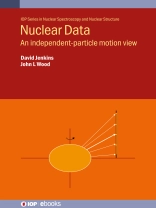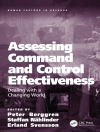Nuclear data represents measured (or evaluated) probabilities of various physical interactions involving the nuclei of atoms. It is used to understand the nature of such interactions by providing the fundamental input to many models and simulations in nuclear physics and related subjects. This book provides an intermediate treatment on the topic of nuclear structure focussing on an independent-particle motion view. It follows Nuclear Data: A Primer, which provided an introduction to nuclear structure. It is divided into four main chapters which outline the necessary theory and critically review it in the light of available data. Structured exercises promote student learning and understanding. This book follows a pathway that is useful to potential readers, particularly Ph D students and advanced undergraduate students.
- Uses a data-driven approach to understanding nuclear structure
- Critically reviews theories in the light of available data
- Includes extensive video-based exercises
- Provides a personal view from experts in the field
विषयसूची
Chapter 1: Where are the shell model states found in nuclei?
Chapter 2: How widely are shell model states seen in nuclei?
Chapter 3: Where are Nilsson model states found in nuclei?
Chapter 4: How are Nilsson configurations affected by rotations?
Chapter 5: How are Nilson states manifested in even-mass nuclei?
लेखक के बारे में
David Jenkins is Head of the Nuclear Physics Group at the University of York, UK. He is also a Fellow of the Institute of Advanced Study, University of Strasbourg (USIAS) and an Extraordinary Professor of the University of Western Cape in South Africa. His research in experimental nuclear physics focusses on several topics such as nuclear astrophysics, clustering in nuclei and the study of proton-rich nuclei.
John Wood is a Professor Emeritus in the School of Physics at Georgia Institute of Technology. He continues to collaborate on research projects in both experimental and theoretical nuclear physics. Special research interests include nuclear shapes and systematics of nuclear structure.












